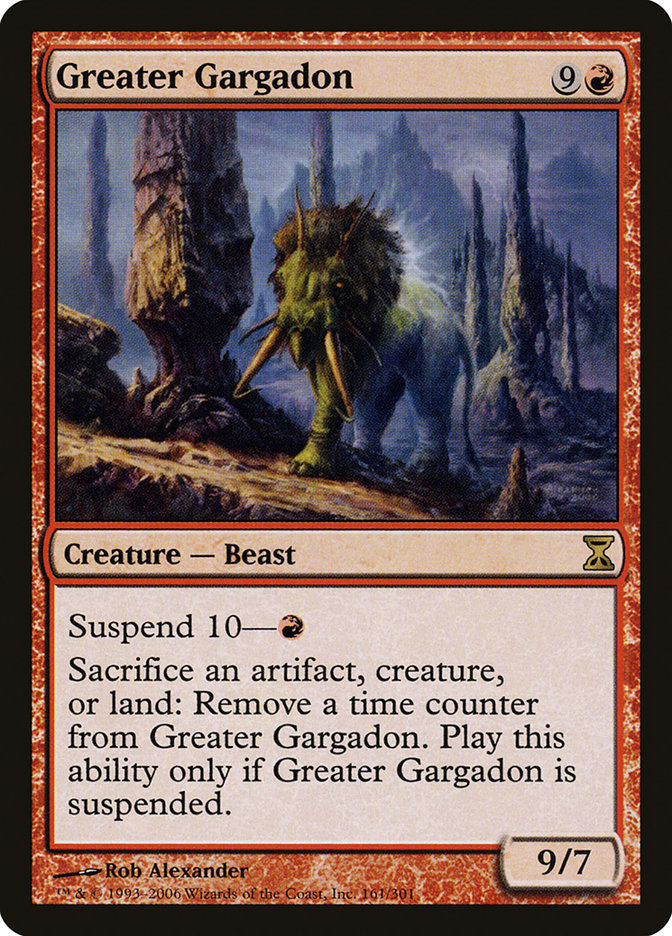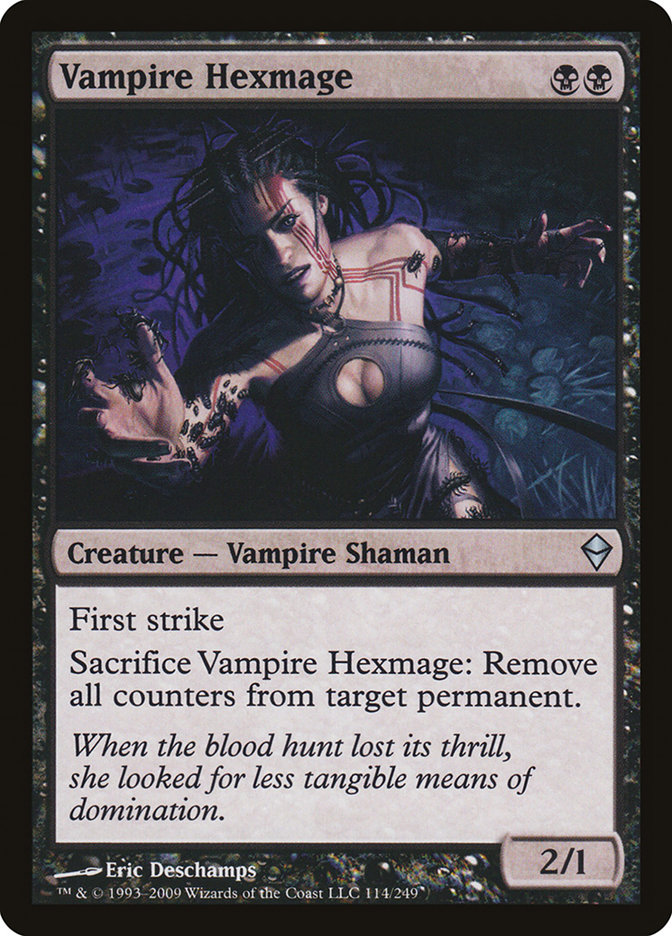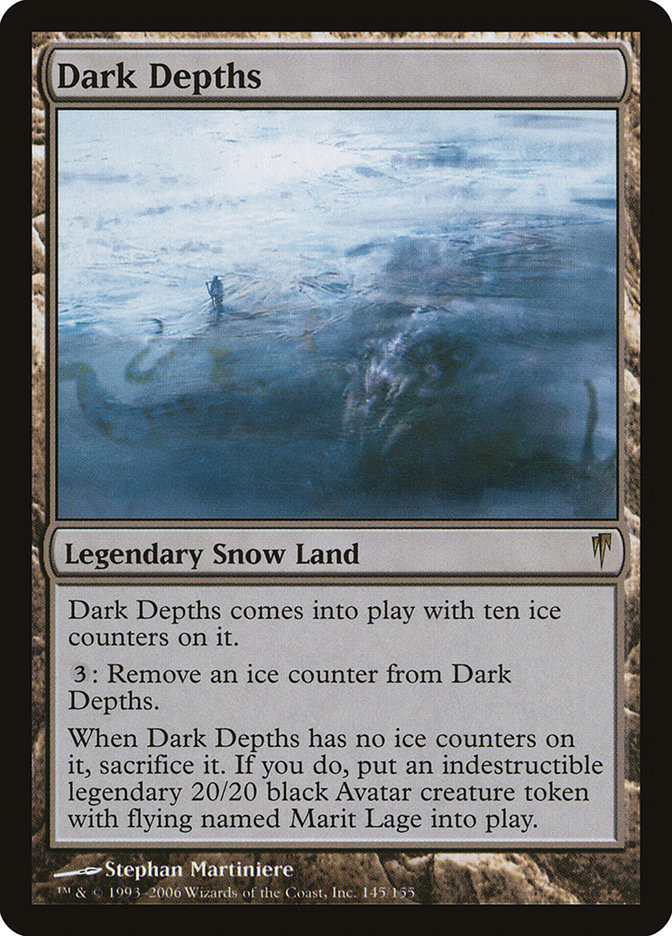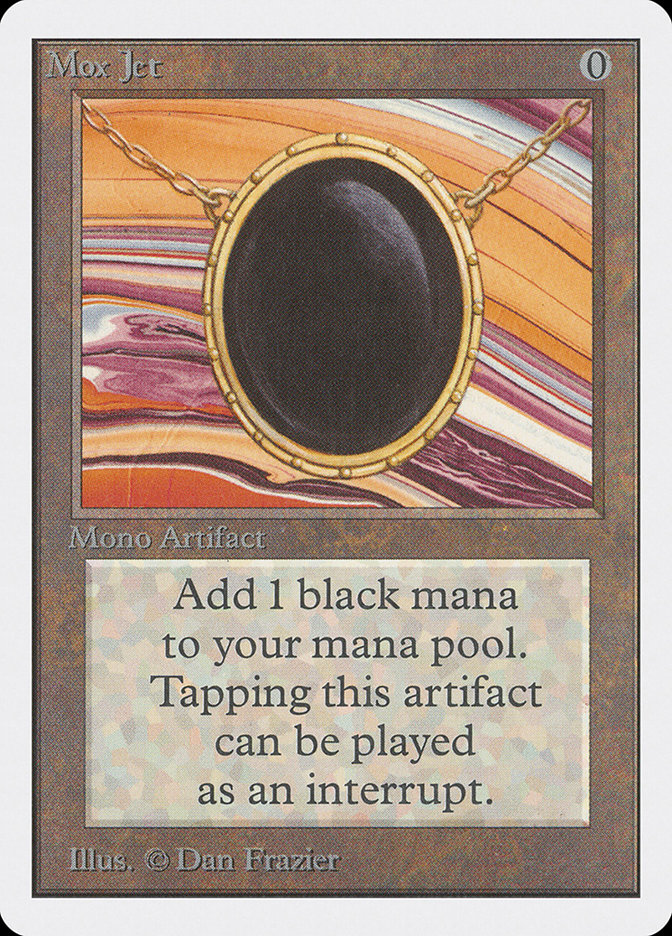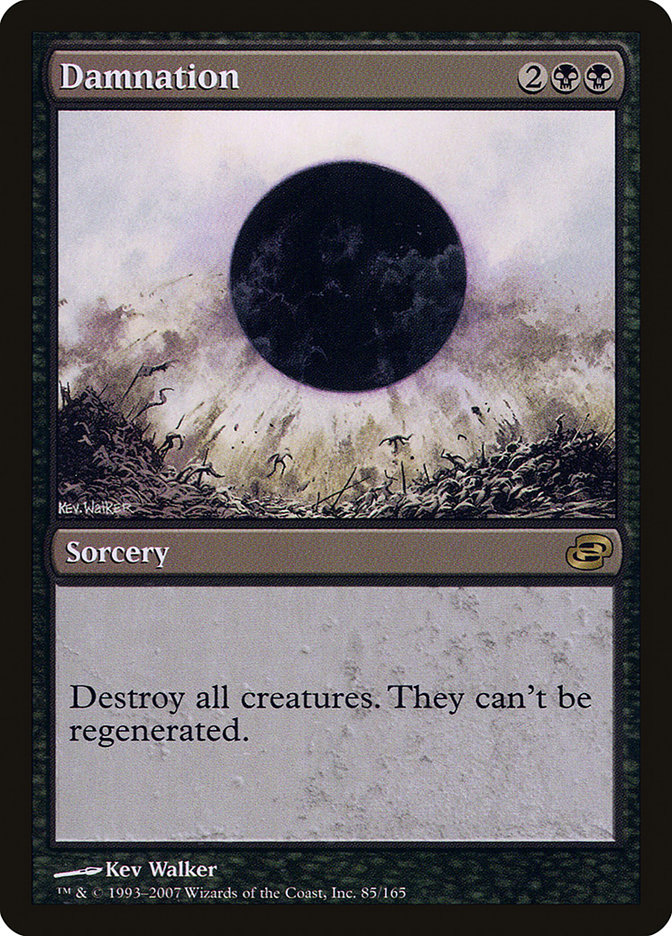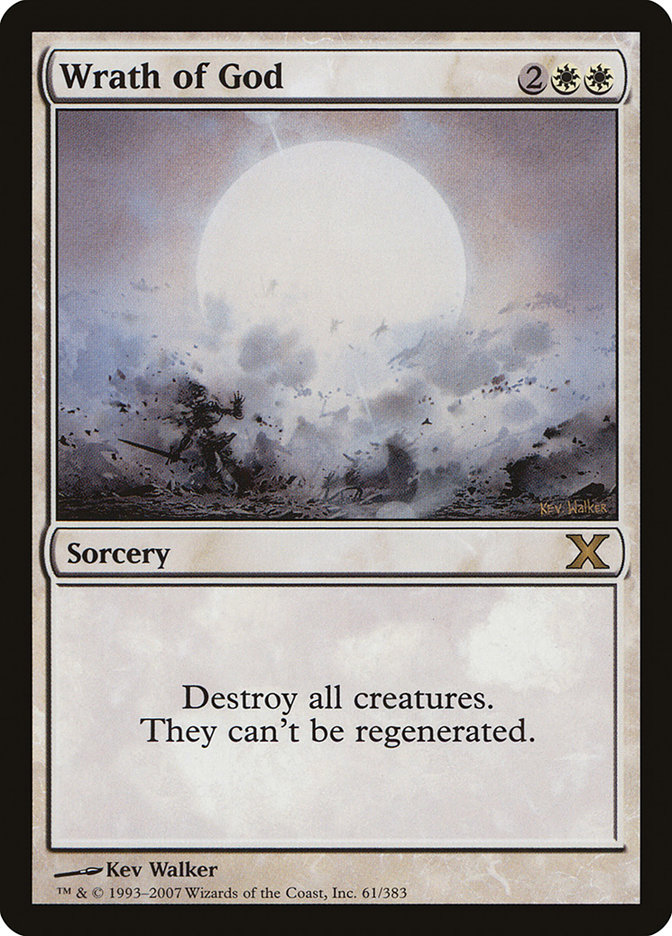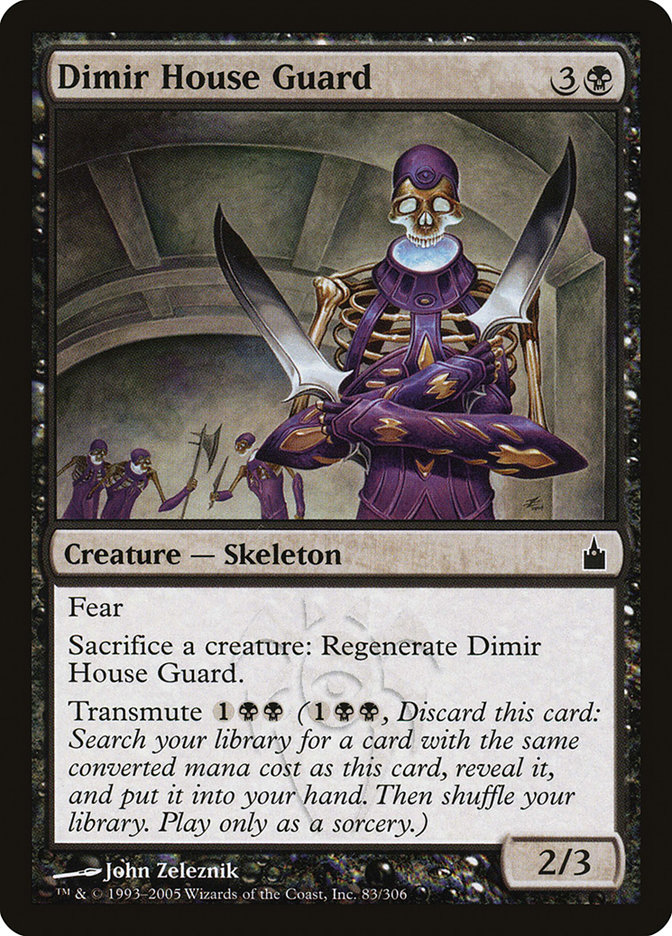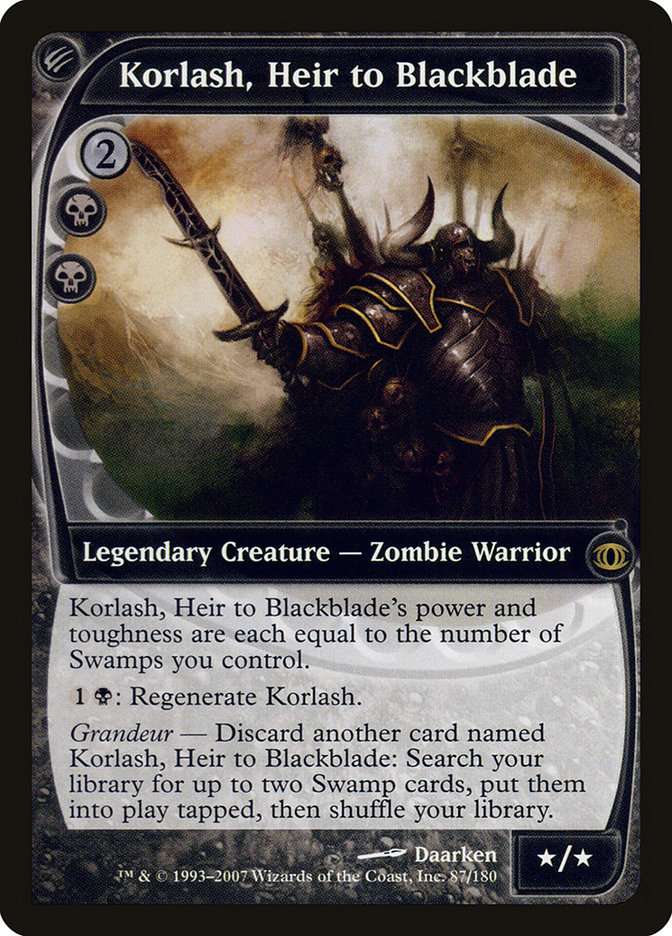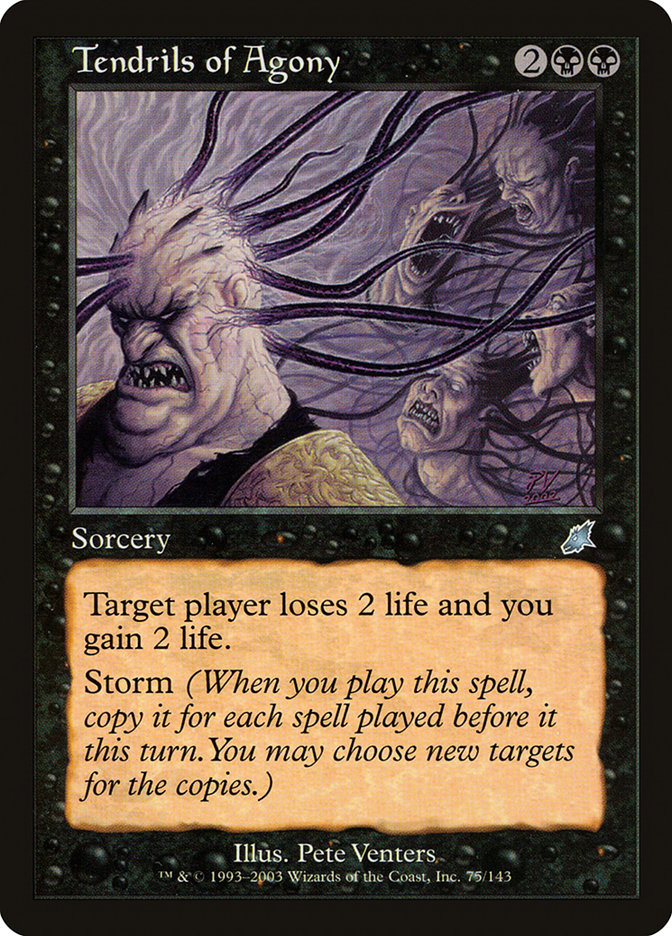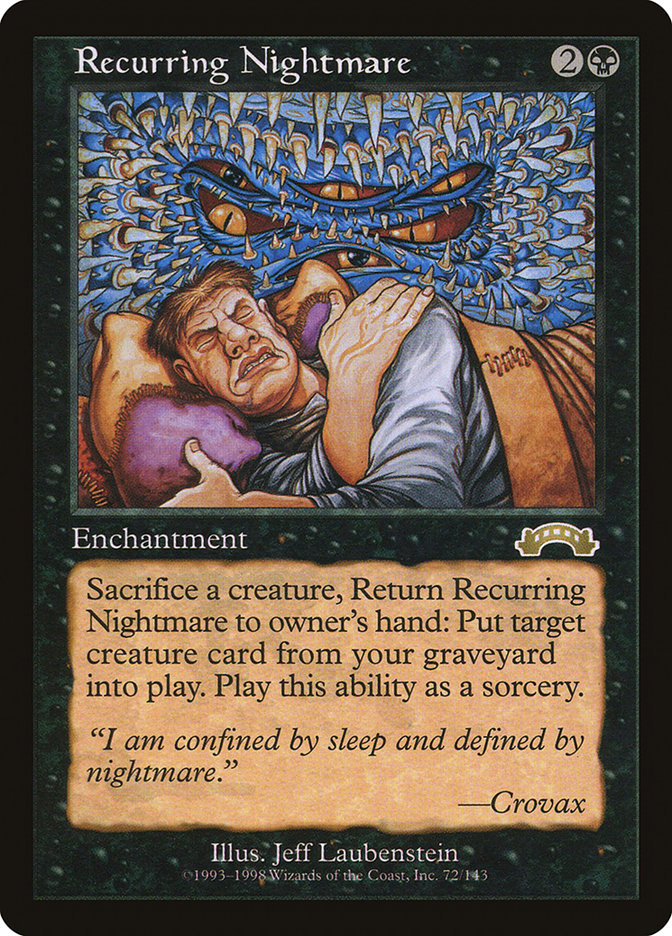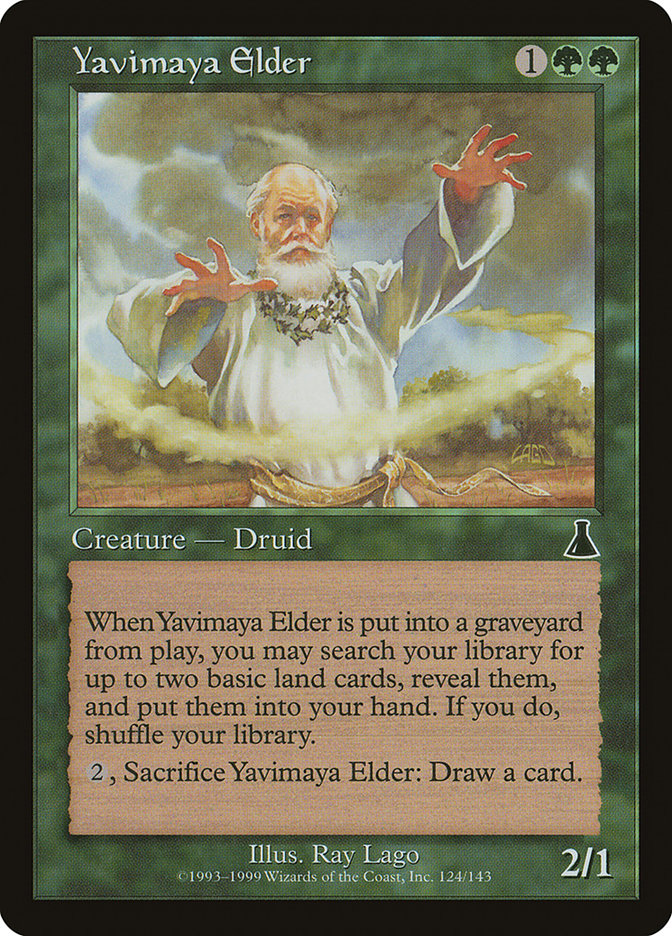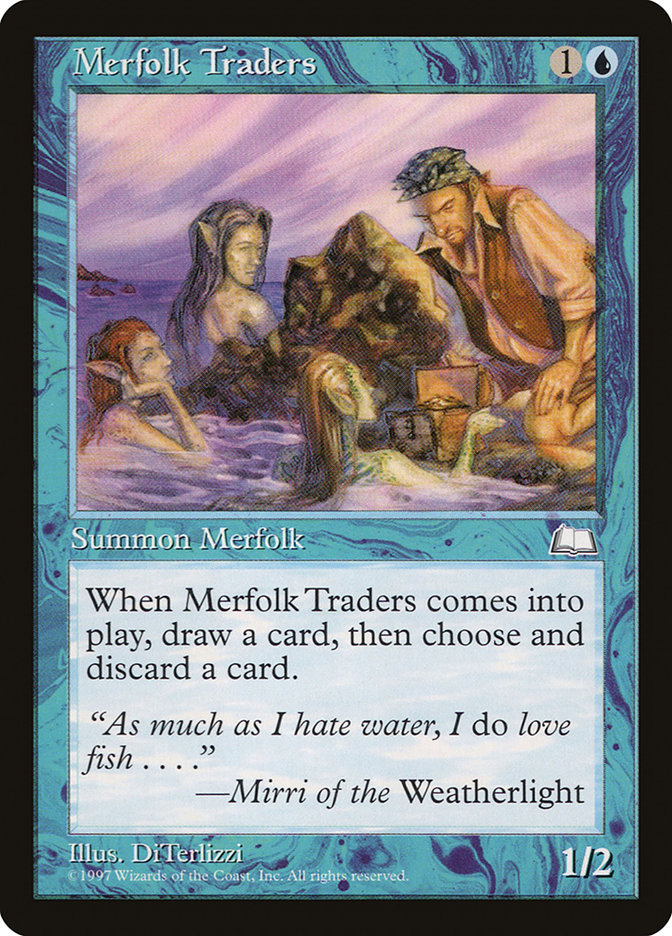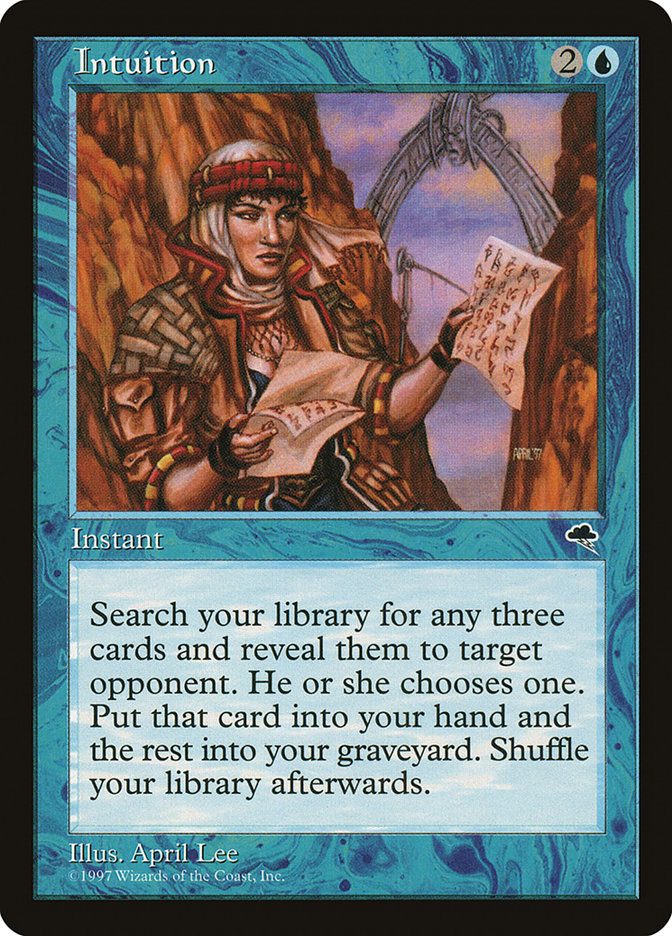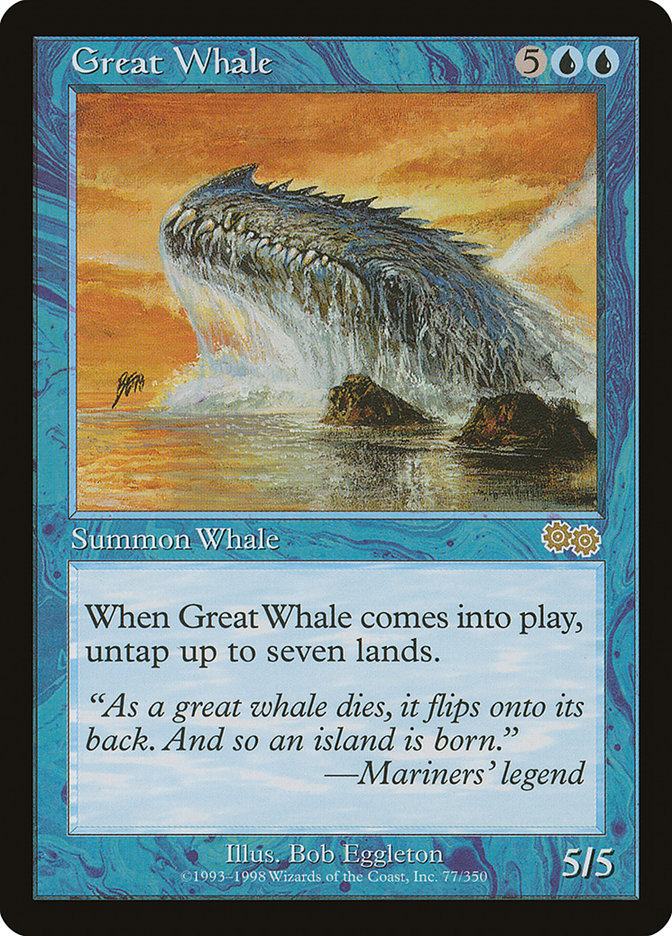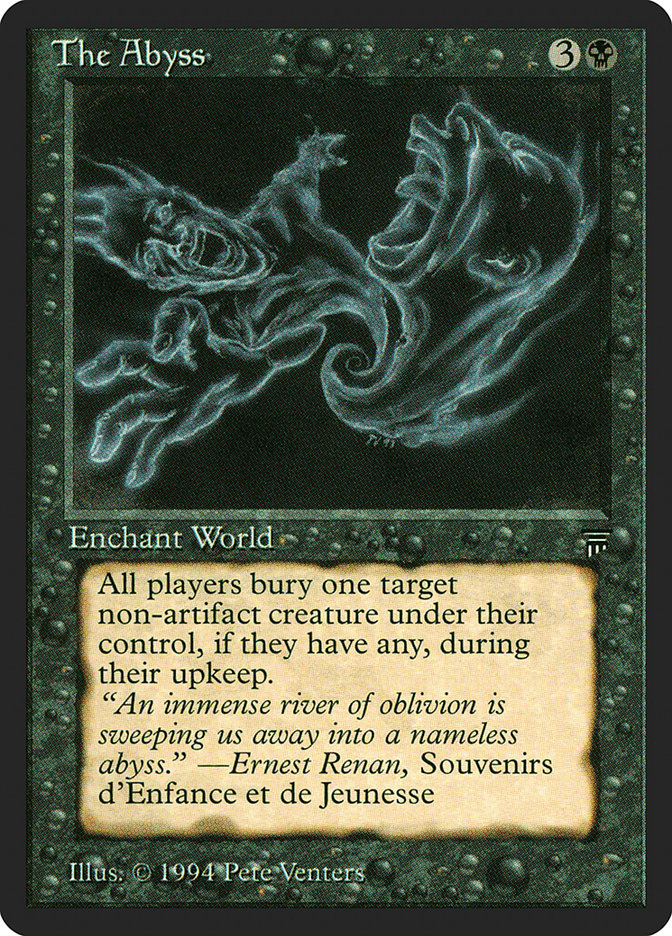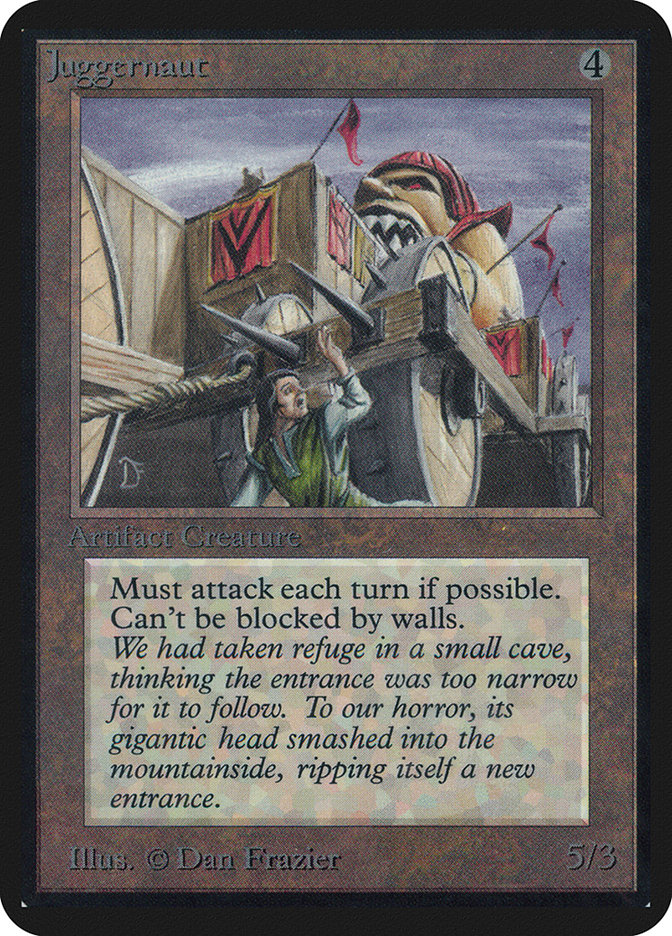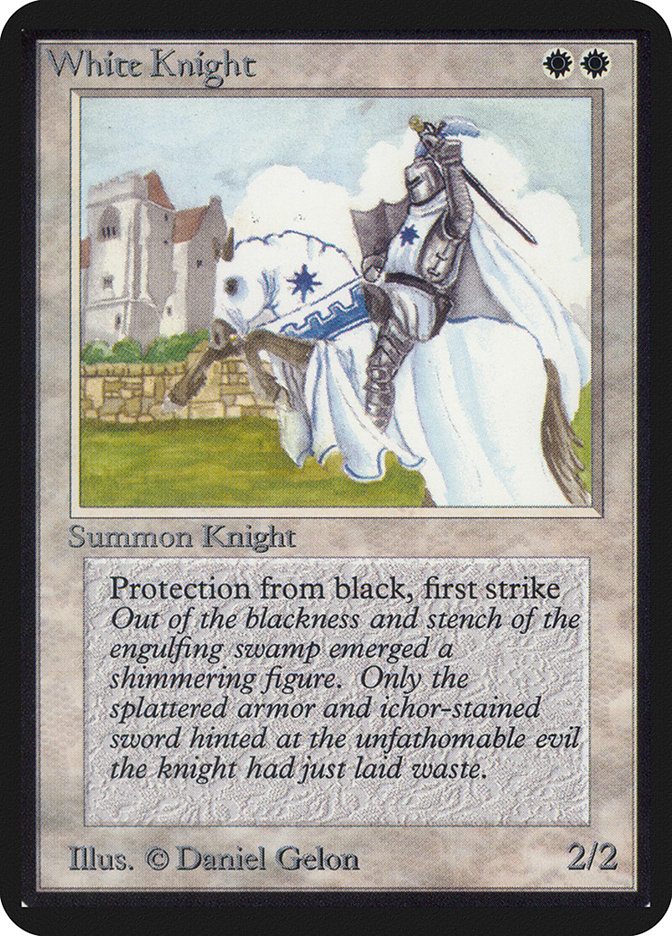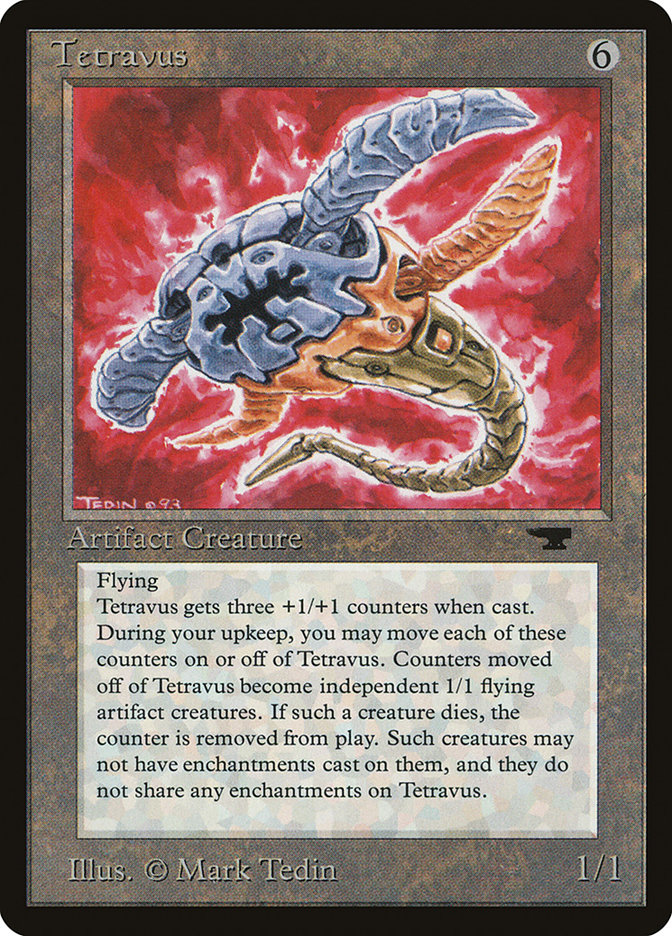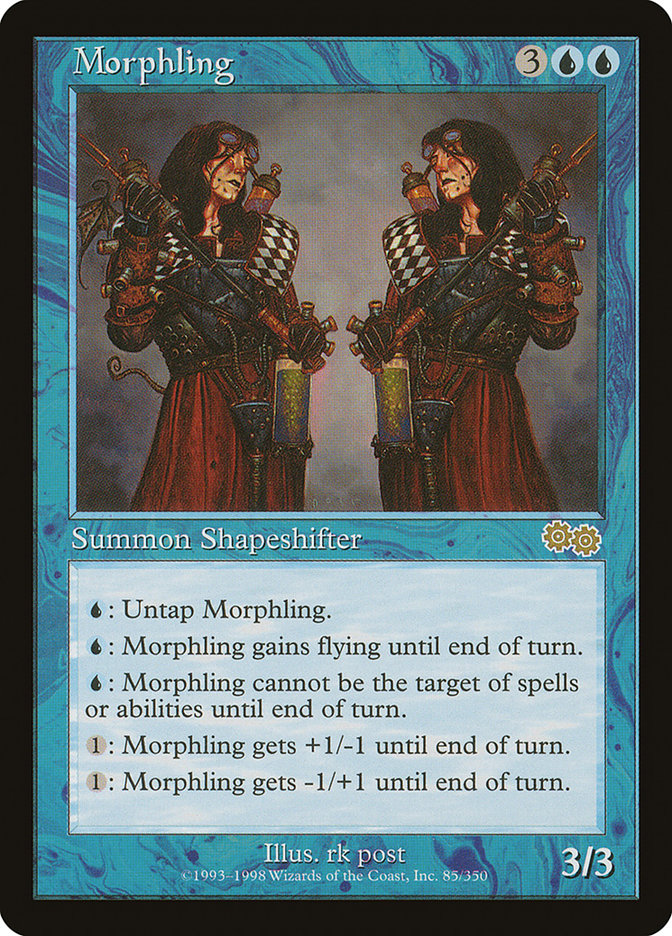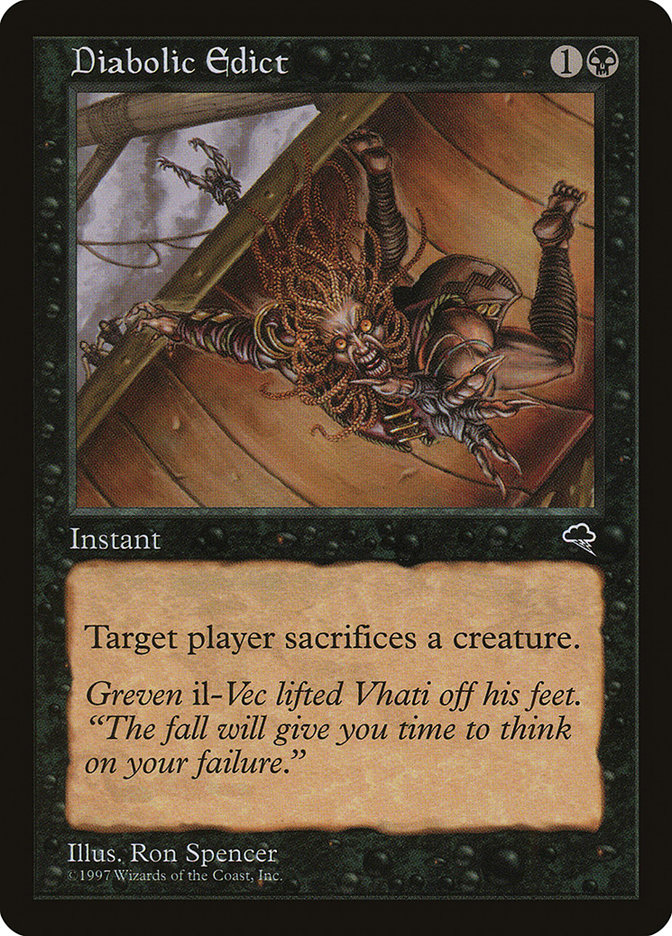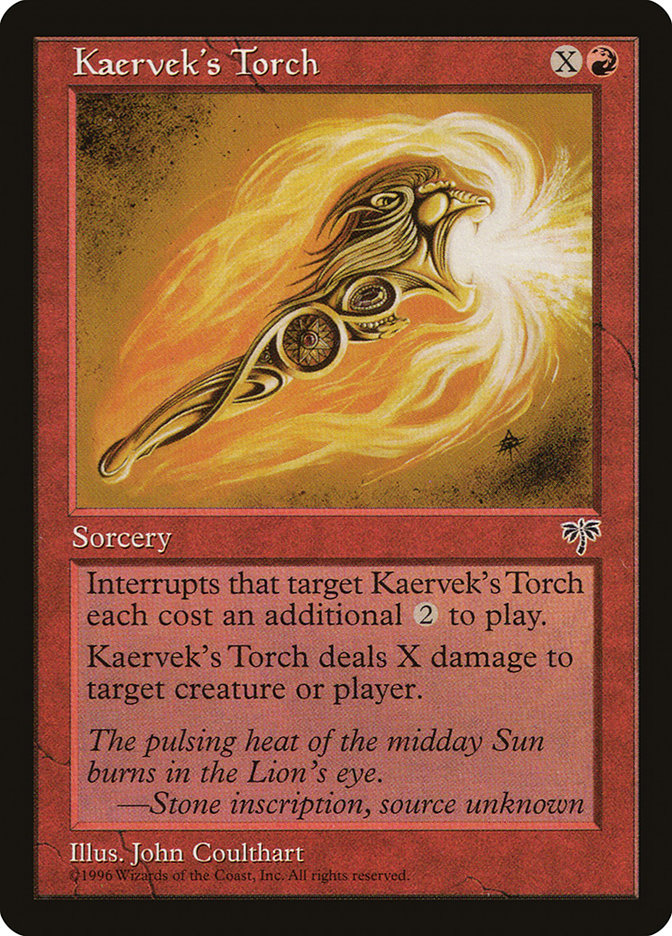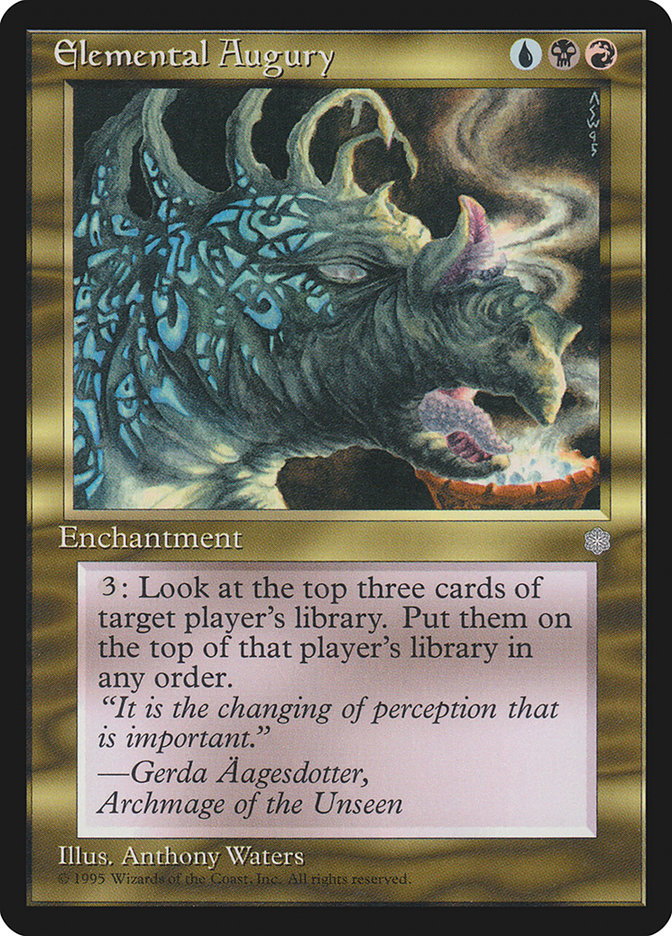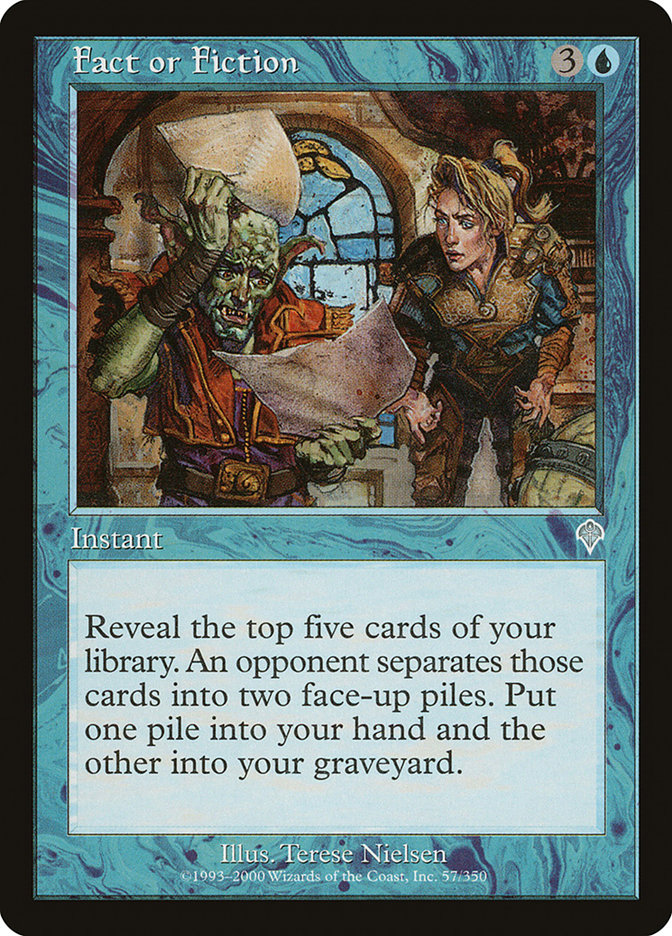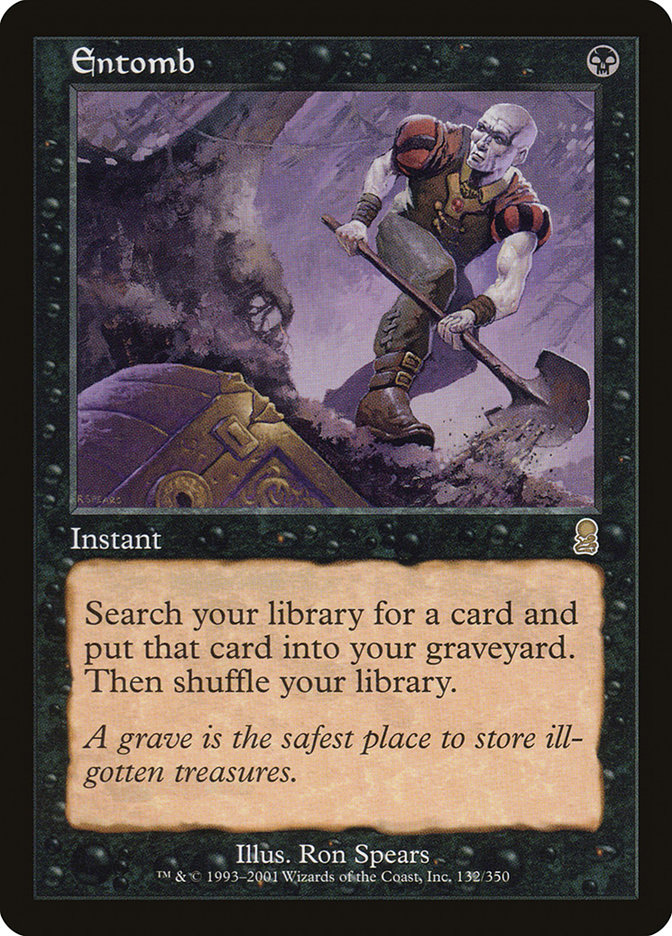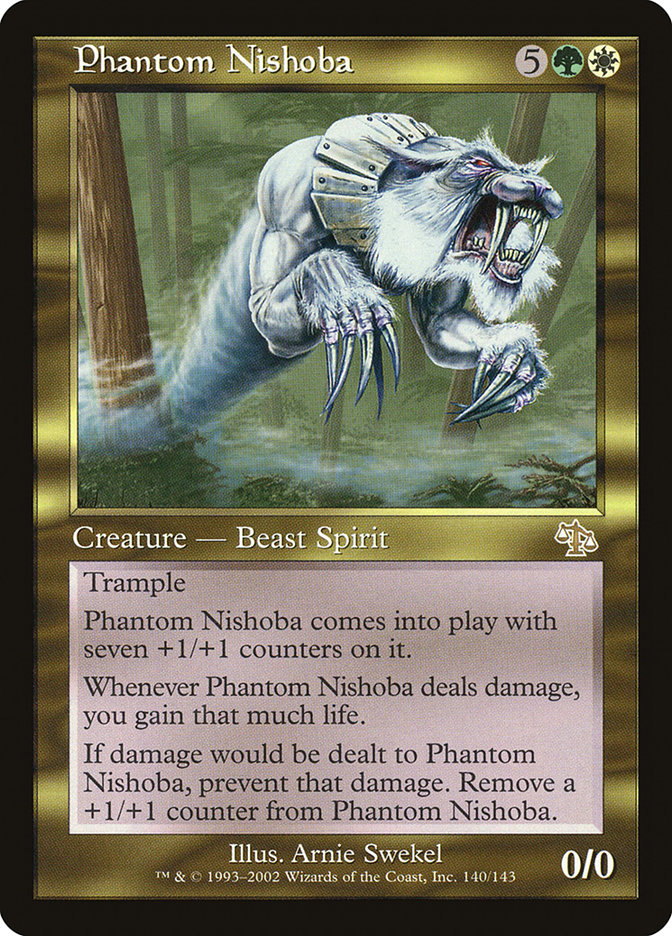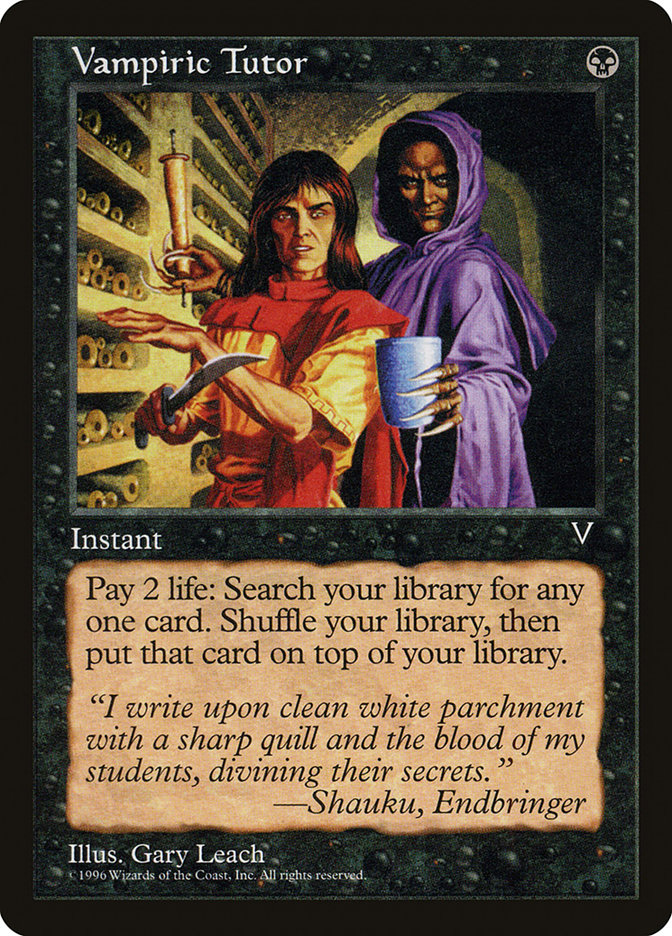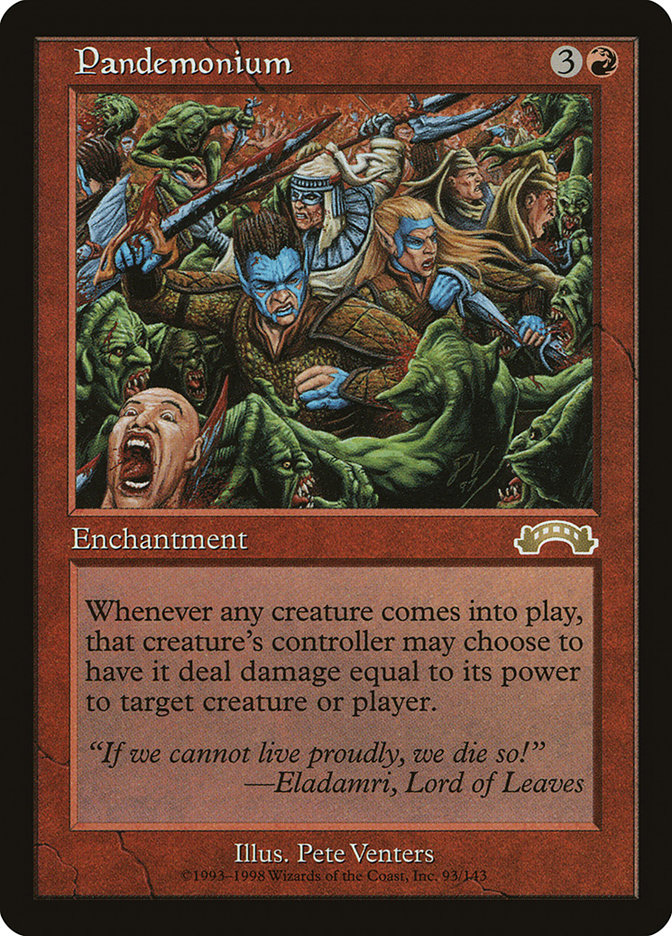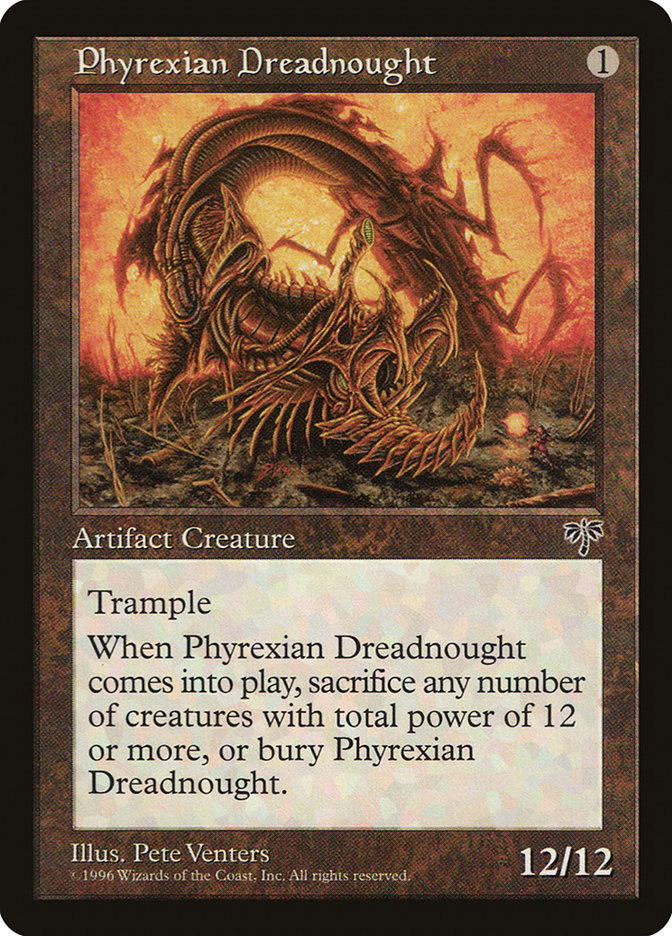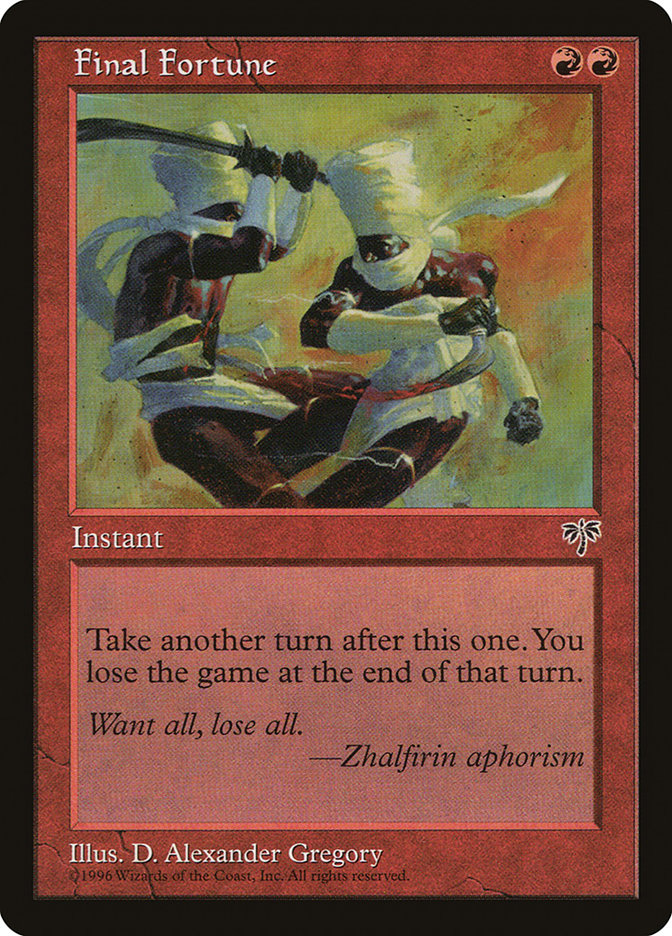The top 25 black cards of all-time do not mess around. How many
creatures in the game are even as good as Dark Confidant?
#20: Dark Confidant
Hall of Famer Bob Maher Jr.’s Invitational card, Dark Confidant, has a long
and illustrious career as a platinum hit for those willing to take a
chance.
Starting from its very first Pro Tour, Dark Confidant has basically never
been anything but a staple in every single format it’s legal in.
Creatures (20)
Lands (23)
Spells (17)
Sideboard

As a two-drop that rewards you for playing cheap cards, it has frequently
been used as part of a beatdown plan, giving you more fuel to keep
snowballing advantage. Besides, if you’re attacking aggressively enough,
how much can your opponent even attack you back to punish you for the life
loss from Bob’s ability.
I appreciate the willingness to run Hit//Run, despite it dealing eight
damage to you. Sometimes you just want to feel something…
Creatures (29)
- 4 Mogg Fanatic
- 1 Nantuko Husk
- 4 Dark Confidant
- 4 Scorched Rusalka
- 4 Greater Gargadon
- 4 Mogg War Marshal
- 4 Keldon Marauders
- 4 Epochrasite
Lands (23)

…And sometimes, you’re Antonio De Rosa and just casually top 8 Nationals
with a playset of Greater Gargadons to go with the playset of Dark
Confidants!
Of course, Dark Confidant is better known for its role as the backbone of
Modern Jund decks, along with Tarmogoyf.
Creatures (19)
Planeswalkers (4)
Lands (24)
Spells (13)
Sideboard

The combination of unbelievably flexible and efficient discard and removal,
combined with Dark Confidant to fuel the whole thing, has been a defining
strategy in Modern on many occasions.
Dark Confidant has also been a long time Plan B for combo decks, whether in
the sideboard or the maindeck, such as Paulo Vitor Dama Da Rosa’s Dark
Depths deck from Pro Tour Austin:
Creatures (11)
Lands (24)
Spells (25)

Dark Confidant is great for finding combo pieces and great when you don’t
assemble the combo. It also has a bullseye on it, drawing out removal like
Path to Exile, giving Marit Lage more chance to shine.
Dark Confidant is also one of the best creatures in the game in Vintage,
where every extra card is worth so much, since they are so powerful.
Besides, Moxes sure do make it easy to play Bob on turn 1, and really get
things off to a good start.
Creatures (6)
Planeswalkers (1)
Lands (16)
Spells (37)
- 2 Sensei's Divining Top
- 1 Brainstorm
- 4 Mana Drain
- 1 Vampiric Tutor
- 1 Mystical Tutor
- 1 Yawgmoth's Will
- 4 Force of Will
- 1 Sol Ring
- 1 Demonic Tutor
- 1 Hurkyl's Recall
- 1 Time Walk
- 1 Ancestral Recall
- 1 Mana Crypt
- 1 Time Vault
- 1
- 1 Merchant Scroll
- 1 Rack and Ruin
- 1 Thirst for Knowledge
- 1 Chain of Vapor
- 1 Misdirection
- 1 Tinker
- 1 Voltaic Key
- 1 Black Lotus
- 1 Fact or Fiction
- 1 Mox Emerald
- 1 Mox Jet
- 1 Mox Pearl
- 1 Mox Ruby
- 1 Mox Sapphire
- 1 Darkblast

The life loss is just not that big a deal in powered formats anyway. Legacy
and Vintage games sometimes come down to individual life points, but a much
higher percentage don’t than we’d expect to see in Standard, for instance.
#19: Damnation
Wrath of God was #22 on the white list. Does that mean black is weaker than
white, on account of Damnation coming in slightly higher on the list?
No.
Damnation really is better than Wrath of God anyway. Black appreciates this
effect more, particularly since white always has such an abundance of stuff
along these lines (while black rarely gets anything remotely this good at
this).
Creatures (7)
Lands (16)
Spells (37)

Time Spiral
Block Constructed was built around the existence of Damnation, and right
away, Damnation ran away with things. There was just such a shortage of
compelling things to be doing besides pairing it with some kind of a
Mystical Teachings package.
As for Standard, I played Damnation in my comeback tournament, Regionals
2007.
Creatures (12)
Lands (24)
Spells (24)

I gotta tell you, this was one of my all-time favorites.
YES.
#18: Recurring Nightmare
We’ve already touched on a few Recurring Nightmare decks this month, but
the biggest win for the card has got to be Brian Selden’s 1998 World
Championship list:
Creatures (24)
- 1 Spike Weaver
- 1 Verdant Force
- 1 Tradewind Rider
- 4 Wall of Blossoms
- 4 Birds of Paradise
- 1 Man-o'-War
- 2 Nekrataal
- 2 Uktabi Orangutan
- 2 Spike Feeder
- 2 Wall of Roots
- 1 Spirit of the Night
- 1 Orcish Settlers
- 1 Cloudchaser Eagle
- 1 Thrull Surgeon
Lands (22)
Spells (14)
Sideboard

While Recurring Nightmare is most often thought of as part of Survival of
the Fittest strategies, it has also enjoyed a fair bit of success in B/G
Rock decks, just using it for value…
…and in combo decks seeking to loop it, with any number of creatures that
effectively net you mana each time.
Hall of Famer David Humphreys was the first to really abuse Recurring
Nightmare with the “untap” mechanic in Urza’s Saga. He’d turn two
Merfolk Traders, turn three Intuition for Great Whale, turn four “combo
off” by Recurring Great Whales into other Great Whales over and over,
eventually playing a really big Stroke of Genius for the win.
#17: The Abyss
Just as white had Moat for making Wrath of God look like a reasonable card,
black has its own four-cost Legends enchantment that makes
Damnation look like child’s play.
The first thing you’ve got to appreciate about The Abyss is that it has
virtual haste. You can play it when there’s one opposing creature, and then
the creature will die at the start of your opponent’s turn. It’s like an
extremely powerful Planeswalker ability, except it happens every turn from
now on, and can’t be attacked or destroyed by most conventional means.
While artifact creatures are the obvious exception to The Abyss’s fury, its
unconventional wording also meant that White Knight could avoid being
sucked in.
Back in 1995, many players wanted to win with Serra Angel, but she wasn’t
really compatible with The Abyss. As such, players with their hearts set on
The Abyss turned to Tetravus, for its ability to attack through both a Moat
and The Abyss.
Tetravus did combine well with Mana Drain and Blood Moon, but was a
somewhat fringe choice, on account of its weakness to artifact destruction.
However, when Urza’s Saga came along, The Abyss got a major
upgrade, thanks to the printing of what was once considered the best
creature in Magic:
Morphling’s untargetable ability meant it could survive a The Abyss
indefinitely, while also jumping over Moats from time to time.
Creatures (2)
Lands (21)
Spells (37)
- 1 Stroke of Genius
- 4 Mana Drain
- 1 Counterspell
- 1 Vampiric Tutor
- 1 Mystical Tutor
- 1 Yawgmoth's Will
- 4 Force of Will
- 1 Diabolic Edict
- 1 Balance
- 1 Sol Ring
- 1 Regrowth
- 1 Mind Twist
- 1 Demonic Tutor
- 1 Time Walk
- 1 Ancestral Recall
- 4 Impulse
- 1 The Abyss
- 2 Seal of Cleansing
- 1 Obliterate
- 1 Kaervek's Torch
- 1 Black Lotus
- 1 Fact or Fiction
- 1 Mox Emerald
- 1 Mox Jet
- 1 Mox Pearl
- 1 Mox Ruby
- 1 Mox Sapphire

Keeper was a relatively similar style of control deck to the popular The
Deck Brian Weissman used to teach the world about the idea of “card
advantage.” The biggest differences were typically adoption of The Abyss
and use of black removal and burn, instead of Swords to Plowshares.
The archetype’s primary guiding voice was historically great deckbuilder
Mike Long who actually went on to win that Invitational with Keeper, albeit
with both copies of The Abyss in the sideboard.
Creatures (3)
Lands (20)
Spells (37)
- 4 Mana Drain
- 1 Vampiric Tutor
- 1 Mystical Tutor
- 1 Grim Monolith
- 1 Yawgmoth's Will
- 4 Force of Will
- 2 Diabolic Edict
- 1 Mana Vault
- 1 Sol Ring
- 1 Mind Twist
- 1 Demonic Tutor
- 1 Time Walk
- 1 Ancestral Recall
- 1 Fellwar Stone
- 1 Disrupting Scepter
- 3 Impulse
- 1 Merchant Scroll
- 2 Pyroblast
- 1 Amnesia
- 1 Black Lotus
- 3 Fact or Fiction
- 1 Mox Jet
- 1 Mox Pearl
- 1 Mox Ruby
- 1 Mox Sapphire
Sideboard

While Long had originally employed Elemental Augury as part of his endgame
(it “kept then locked up”), the printing of Fact or Fiction forced his
hand.
#16: Entomb
Is Entomb the broken card, or are Reanimate, Exhume, Life//Death, Animate
Dead, Dance of the Dead, and Goryo’s Vengeance?

That is a fair point, since all those cards are pretty messed up; however,
there are so many of them, and just one Entomb.
Creatures (8)
- 1 Verdant Force
- 1 Visara the Dreadful
- 1 Symbiotic Wurm
- 1 Stronghold Taskmaster
- 1 Nether Spirit
- 1 Petradon
- 2 Faceless Butcher
Lands (23)
Spells (28)
Sideboard

Entomb is frequently better than a one-mana Demonic Tutor, since finding
the creature you want is only half the battle. Getting into your graveyard
is also crucial, if you’re on a reanimator plan. It’s hard enough to deal
with a seven, eight, or nine-drop on the first or second turn, but to have
to do so against the absolute best creature in their deck against you?
Ridiculous.
While Entomb has most commonly been used in Mono-Black or B/U Reanimator
decks, it has also been known to serve as a transformational sideboard
plan. For instance:
Creatures (16)
Lands (22)
Spells (22)
Sideboard

Kotiranta knew his opponents would have a lot of sideboard hate for his
fast black aggro deck, but Entomb + Reanimation spells + Vampiric Tutor to
help set it up, let him transform into a combo deck that would surprise
people with a quick Avatar of Woe or Phantom Nishoba, leaving them looking
at the Shock in their hand in disbelief.
Of course, let’s just call a spade for a spade. While Exhume, Life//Death,
Animate Dead, Dance of the Dead, and Goryo’s Vengeance are all overpowered,
at least they have the decency to cost two. Reanimate costing one mana is
so crazy, it has actually appeared in a fair number of combo decks, even
without Entomb.
For instance, while Pro Tour Rome 2002 was mostly remembered for Tolarian
Academy, one of the sickest breakout decks of the weekend was Adrian
Sullivan’s Dread Panda Roberts.
Creatures (4)
Lands (20)
Spells (36)

This was the first successful tournament deck to use Necropotence as a
“tutor.” If he had two Lotus Petals, it wasn’t unthinkable for him to Dark
Ritual out a Necropotence on turn one, Necro for 16-19 (depending on his
hand, he might want to save enough life to Vampiric Tutor plus “drawing”
one more card).
This would usually be enough to find Pandemonium and some combination of
Phyrexian Dreadnought and Reanimate, plus the mana to play them…
And a Final Fortune might end the game before the opponent has even taken a
turn(!)




